
How the minimum wage has changed in your state
How the minimum wage has changed in your state
When President Franklin D. Roosevelt signed the Fair Labor Standard Act into law in 1938, the federal minimum wage was 25 cents an hour. Fast forward 80 years and the federal minimum wage has reached $7.25 and created swirls of debate across the country. Twenty-one states launched 2020 with higher minimum wages and then-President-elect Joe Biden vowed to raise the minimum wage rate to $15 an hour if elected president.
Arizona, Arkansas, California, Colorado, Illinois, Maine, Maryland, Massachusetts, Michigan, Missouri, New Jersey, New Mexico, New York, and Washington raised their rates due to previously-approved ballot initiatives or approved legislation. Seven states automatically increased their minimum wage rates based on the cost of living.
The academic debate surrounding the minimum wage attempts to understand whether raising the minimum wage will cause job losses at businesses that employ many people at minimum wage. While some employees may earn more, overall well-being goes down when layoffs occur. A report released by the Congressional Budget Office states raising the minimum wage gradually to $15 by 2025 could cost 1.3 million jobs, while academics at the University of California Berkeley have predicted low effects on job loss and significant progress in combating wealth inequality were the law to pass.
Stacker took a look at all 50 states plus the District of Columbia to explore the varying pay rates of hourly workers, how they compare to the living wage, and where voters and lawmakers are seeing the minimum wage go in the future.
Combining data from the Economic Policy Institute's Minimum Wage Tracker (released Nov. 5, 2020) and the NCSL's website with research from news and trusted sources, we discovered each state's minimum wage, what has changed in 2020, and what the future looks like for America's hourly workers. Inflation-adjusted wages were calculated using the CPI calculator.
Take a tour from the lowest minimum wage of $5.15 in Georgia and Wyoming to the highest rate of $15 being paid to hourly workers in the District of Columbia.

Alabama
- Minimum wage in 2020: no state-level minimum
- Minimum wage in 2000: no state-level minimum
- Minimum wage in 1980: no state-level minimum
Alabama is one of five states that have not adopted a state minimum wage. The other states are Louisiana, Mississippi, South Carolina, and Tennessee. Birmingham workers have been locked in battle with state legislators since 2016, when the city voted in favor of a wage increase that was never put into practice; soon after, the legislature passed a law restricting cities and towns in Alabama from setting their own minimum wage.

Alaska
- Minimum wage in 2020: $10.19
- Minimum wage in 2000: $5.65 ($8.70 inflation-adjusted)
- Minimum wage in 1980: $3.60 ($12.06 inflation-adjusted)
Alaska's minimum wage rose to $10.34 an hour in 2021, continuing the trend of annual increases that started in 2016. According to state law, public school bus drivers are paid at least twice the minimum wage, and the Alaska Permanent Fund sends yearly payments to all Alaskans, regardless of income.
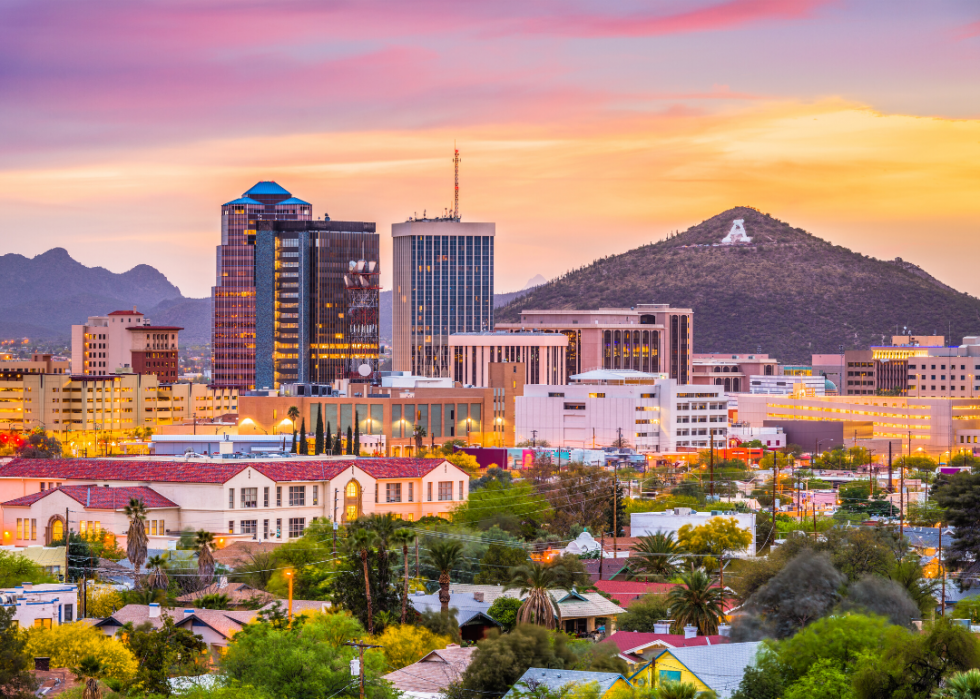
Arizona
- Minimum wage in 2020: $12
- Minimum wage in 2000: no state-level minimum
- Minimum wage in 1980: no state-level minimum
Arizona’s minimum wage of $12 an hour exceeds the federal minimum wage by over $4, but still is 1 cent below what is considered a living wage for an individual. As recently as 2016, the minimum wage was $8.05.

Arkansas
- Minimum wage in 2020: $10
- Minimum wage in 2000: $5.15 ($7.93 inflation-adjusted)
- Minimum wage in 1980: $2.55 ($8.54 inflation-adjusted)
The minimum wage in Arkansas is $2.75 over the federal minimum wage, as well as higher than its surrounding states of Kansas, Oklahoma, Louisiana, Mississippi, Tennessee, and Kentucky. In the 2018 midterm elections, voters approved a measure to increase the state’s minimum wage to $11 an hour by 2021, a 29% increase over three years.
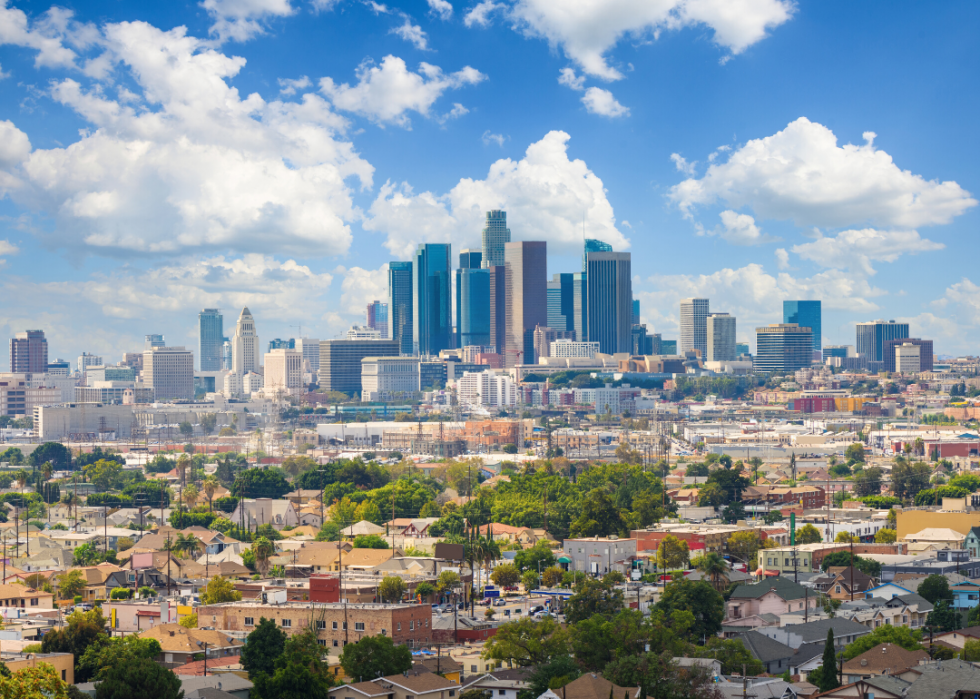
California
- Minimum wage in 2020: $13
- Minimum wage in 2000: $5.75 ($8.86 inflation-adjusted)
- Minimum wage in 1980: $2.90 ($9.72 inflation-adjusted)
California's minimum wage will continue to rise a dollar a year until it reaches $15 for large employers in 2022. Employers with 25 employees or fewer will see the hike to $15 an hour in 2023. The current wage is almost $2 under the living wage for an adult in the Golden State.
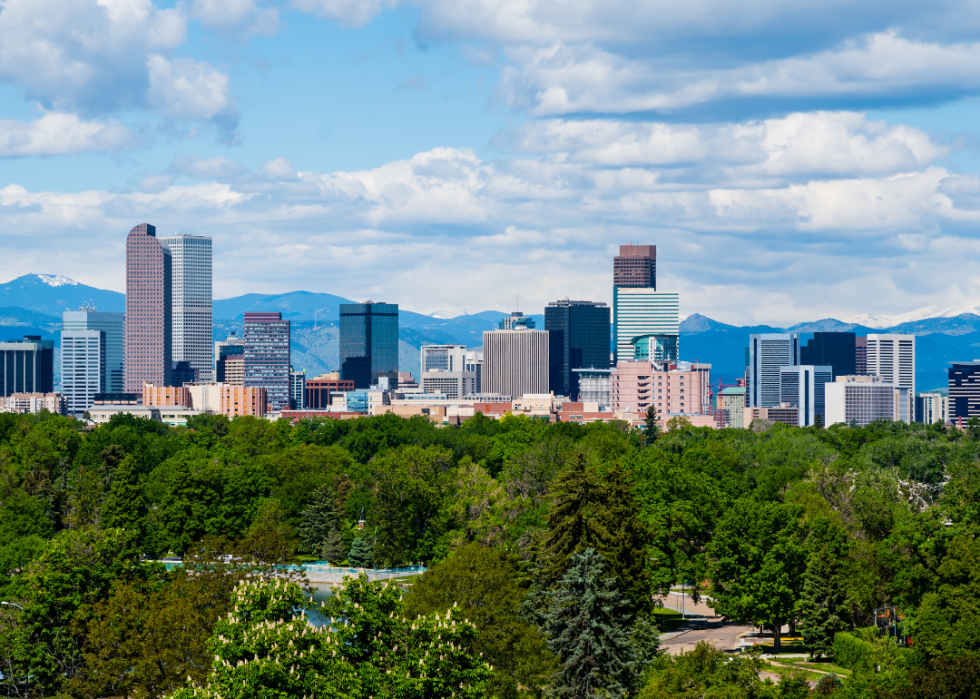
Colorado
- Minimum wage in 2020: $12
- Minimum wage in 2000: $5.15 ($7.93 inflation-adjusted)
- Minimum wage in 1980: $1.90 ($6.37 inflation-adjusted)
Colorado is one of 14 states that increased its rates because of legislation or ballot initiatives. Over 2,000 employees of Amazon are slated to make $15 an hour, over 50% more than the minimum wage.

Connecticut
- Minimum wage in 2020: $12
- Minimum wage in 2000: $6.15 ($9.47 inflation-adjusted)
- Minimum wage in 1980: $3.12 ($10.45 inflation-adjusted)
The minimum wage in Connecticut is $4.75 higher than the federally-mandated rate of $7.25. Gov. Ned Lamont in May 2019 signed a bill to increase the minimum wage to $15 incrementally between 2019 and 2023. The first increase to $11 occurred in October 2019. The latest increase to $12 an hour went into effect in January 2020.

Delaware
- Minimum wage in 2020: $9.25
- Minimum wage in 2000: $5.65 ($8.70 inflation-adjusted)
- Minimum wage in 1980: $2 ($6.70 inflation-adjusted)
In July 2018, Delaware joined the states in increasing their minimum wages. The minimum wage was slated to increase incrementally over four years, starting with $8.75 and ending at $10.25 an hour. The increase is still well below the living wage of $12.78 for an individual.
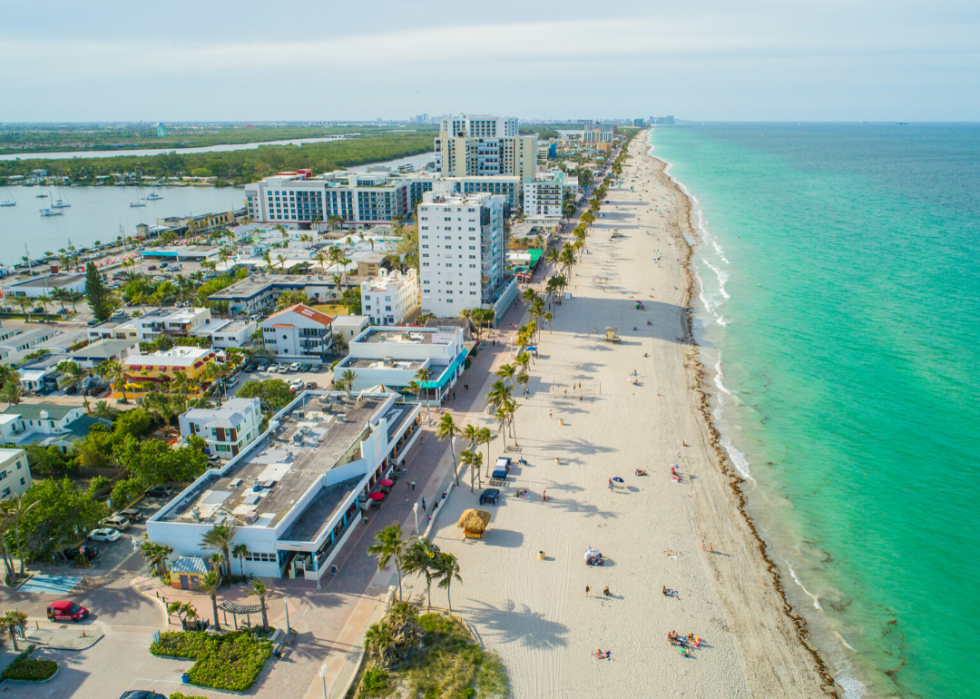
Florida
- Minimum wage in 2020: $8.56
- Minimum wage in 2000: no state-level minimum
- Minimum wage in 1980: no state-level minimum
Florida’s minimum wage increased by 21 cents to $8.46 on Jan. 1, 2019. The 2.5% increase is $3.93 under the living wage for a Florida resident. In the recent election, voters in Florida passed an amendment to raise the minimum wage to $15 per hour over the next few years.

Georgia
- Minimum wage in 2020: $5.15
- Minimum wage in 2000: $3.25 ($5.01 inflation-adjusted)
- Minimum wage in 1980: $1.25 ($4.19 inflation-adjusted)
Georgia's state minimum wage is over $2 under the federally-mandated rate of $7.25 an hour, the lowest minimum wage in the country, along with Wyoming. The two states would benefit the most if the United States moves closer to the proposed increase to $15 an hour.
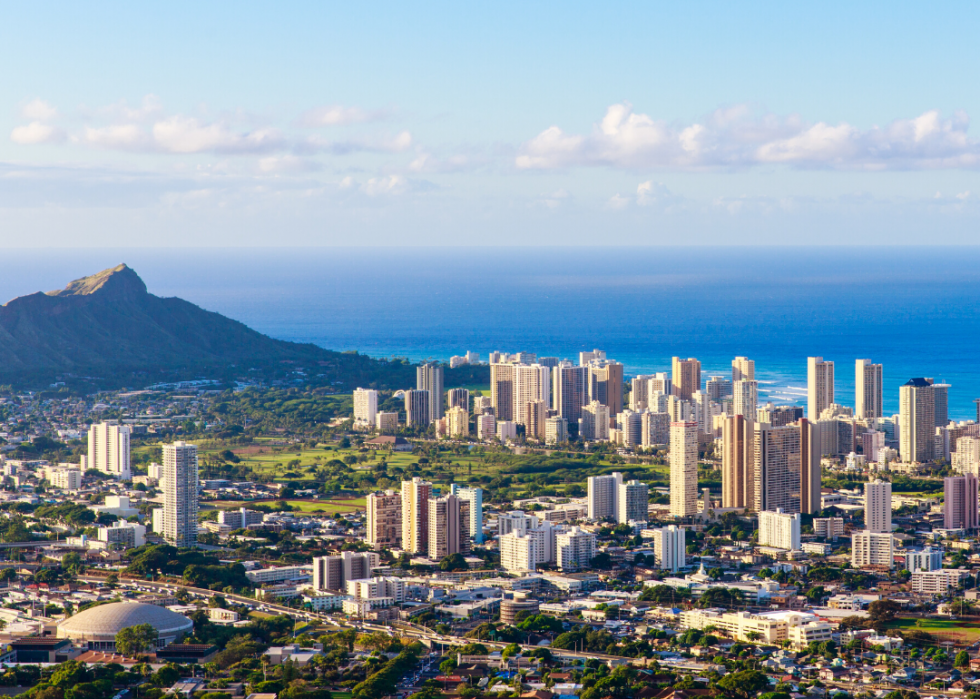
Hawaii
- Minimum wage in 2020: $10.10
- Minimum wage in 2000: $5.25 ($8.09 inflation-adjusted)
- Minimum wage in 1980: $2.90 ($9.72 inflation-adjusted)
Hawaii’s minimum wage sits $2.85 above the federally-mandated minimum wage. The annual income needed to afford a two-bedroom rental home in Hawaii at HUD’s Fair Market Rate is $80,613.
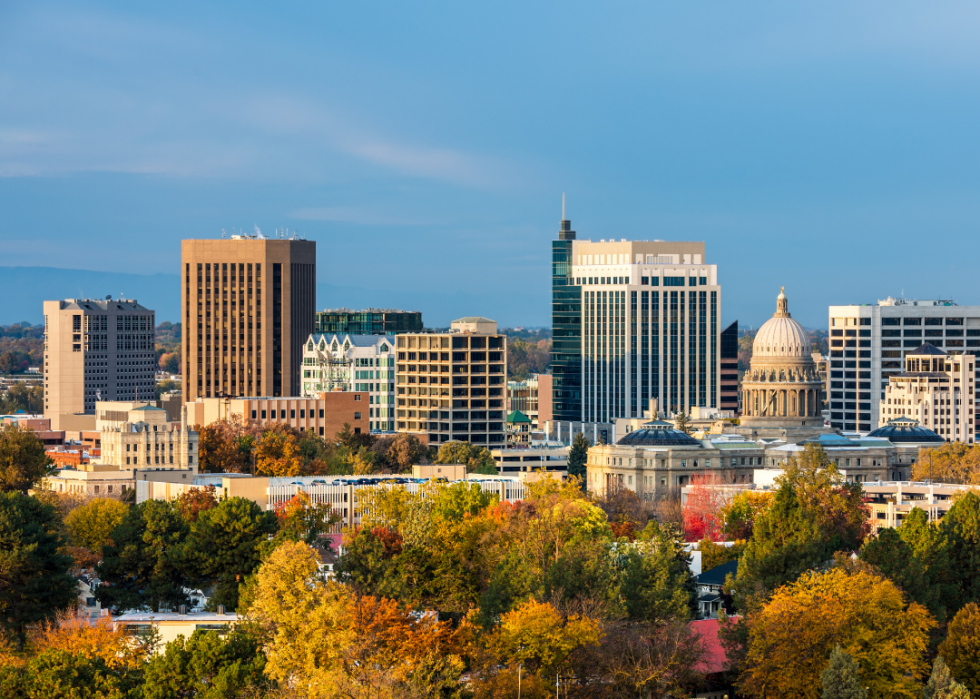
Idaho
- Minimum wage in 2020: $7.25
- Minimum wage in 2000: $5.15 ($7.93 inflation-adjusted)
- Minimum wage in 1980: $2.30 ($7.71 inflation-adjusted)
Idaho is right on the money, meeting the federally-mandated minimum wage of $7.25. However, it falls $3.79 below the living wage for an individual. The annual income needed to afford a two-bedroom apartment in Idaho at HUD’s Fair Market Rate is $34,511.
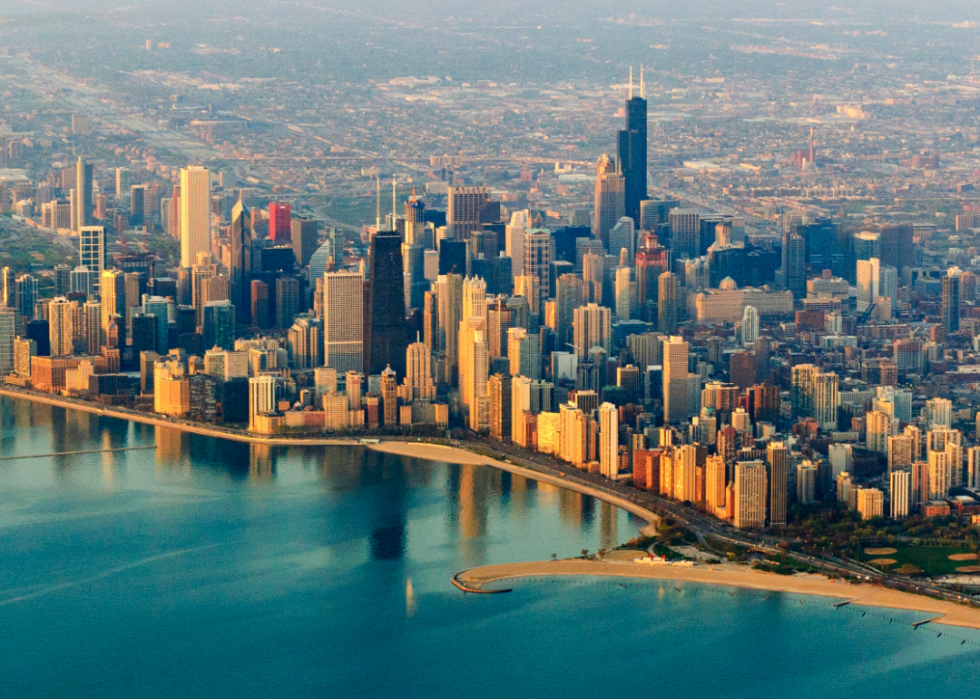
Illinois
- Minimum wage in 2020: $10
- Minimum wage in 2000: $5.15 ($7.93 inflation-adjusted)
- Minimum wage in 1980: $2.30 ($7.71 inflation-adjusted)
Workers in Illinois earn $2.75 over the federally-mandated wage, and the minimum wage is set to increase to $15 by 2025. However, the minimum wage in Cook County is $13 an hour, while the rate in Chicago is already $14 an hour.

Indiana
- Minimum wage in 2020: $7.25
- Minimum wage in 2000: $5.15 ($7.93 inflation-adjusted)
- Minimum wage in 1980: $2 ($6.70 inflation-adjusted)
Indiana employers pay workers the current federally-mandated wage of $7.25 per hour. This is $3.79 under the living wage for an individual in the state. However, several legislators have proposed minimum wage increases in the statehouse.

Iowa
- Minimum wage in 2020: $7.25
- Minimum wage in 2000: $5.15 ($7.93 inflation-adjusted)
- Minimum wage in 1980: no state-level minimum
Iowa workers can expect to make the federally-mandated minimum wage of $7.25. Employees of Amazon's warehouse in Des Moines will earn $15 an hour, more than double the state's minimum wage.

Kansas
- Minimum wage in 2020: $7.25
- Minimum wage in 2000: $2.65 ($4.08 inflation-adjusted)
- Minimum wage in 1980: $1.60 ($5.36 inflation-adjusted)
If you work in Kansas, you have seen the minimum wage stay at $7.25 for the last decade. This is the same rate the federal government has mandated since 2009.

Kentucky
- Minimum wage in 2020: $7.25
- Minimum wage in 2000: $5.15 ($7.93 inflation-adjusted)
- Minimum wage in 1980: $2.15 ($7.20 inflation-adjusted)
The Bluegrass State mirrors the federally-mandated minimum wage of $7.25. This translates into $290 a week based on a 40-hour work week, or $15,080 per year. The state has not increased its minimum wage for over a decade.
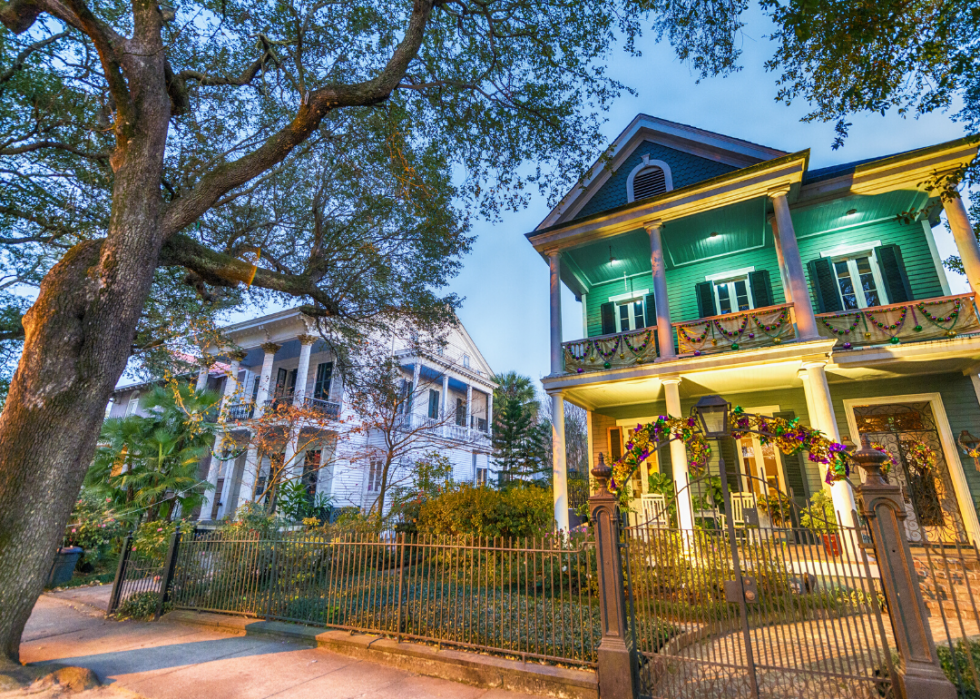
Louisiana
- Minimum wage in 2020: no state-level minimum
- Minimum wage in 2000: no state-level minimum
- Minimum wage in 1980: no state-level minimum
In 2018, senators from Louisiana voted down a bill that would raise the minimum wage from $7.25 to $8 in 2019 and $8.50 in 2020. Louisiana is one of five states that has no minimum wage. The others are Alabama, Mississippi, South Carolina, and Tennessee.

Maine
- Minimum wage in 2020: $12
- Minimum wage in 2000: $5.15 ($7.93 inflation-adjusted)
- Minimum wage in 1980: $3.10 ($10.39 inflation-adjusted)
The Pine Tree State’s minimum wage increased to $11 an hour in 2019 and rose to $12 in 2020. It dips 48 cents below the living wage for an individual living in Maine this year.

Maryland
- Minimum wage in 2020: $11
- Minimum wage in 2000: $5.15 ($7.93 inflation-adjusted)
- Minimum wage in 1980: $3.10 ($10.39 inflation-adjusted)
Maryland's minimum wage is almost double what it was in 2000 and has tripled since 1980. It will rise every year until it hits $15 in 2025.

Massachusetts
- Minimum wage in 2020: $12.75
- Minimum wage in 2000: $6 ($9.24 inflation-adjusted)
- Minimum wage in 1980: $3.10 ($10.39 inflation-adjusted)
In 1912, Massachusetts became the first state to enact a minimum wage law to protect women and child workers younger than 18 (all of whom at the time were earning around $5 for a more-than-50-hour week). The District of Columbia—and 14 additional states—followed suit, only to be struck down in a 1923 Supreme Court decision deeming a mandated minimum wage unconstitutional. That decision wasn’t reversed until 1937. Massachusetts’ minimum wage will rise 75 cents each year until it's $15 on Jan. 1, 2023.

Michigan
- Minimum wage in 2020: $9.65
- Minimum wage in 2000: $5.15 ($7.93 inflation-adjusted)
- Minimum wage in 1980: $3.10 ($10.39 inflation-adjusted)
Michigan’s minimum wage sits $2.40 above the federally-mandated wage. Lawmakers voted in 2018 to adopt measures to raise the minimum wage to $12.05 an hour by 2030.

Minnesota
- Minimum wage in 2020: $10 (large employers) / $8.15 (small employers)
- Minimum wage in 2000: $4.90-$5.15
- Minimum wage in 1980: $2.90 ($9.72 inflation-adjusted)
Minnesota was one of 20 states that rang in the New Year with a minimum wage increase and one of seven states that automatically increased their rates based on the cost of living. Over the past eight decades, the federally-mandated minimum wage has increased 22 times from 25 cents to its current rate of $7.25.
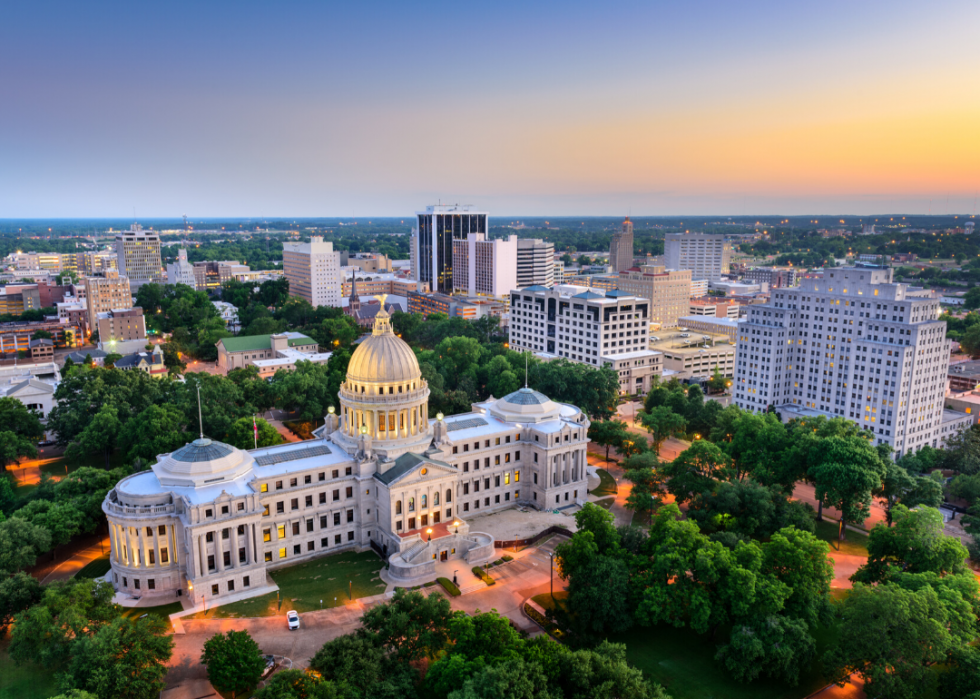
Mississippi
- Minimum wage in 2020: no state-level minimum
- Minimum wage in 2000: no state-level minimum
- Minimum wage in 1980: no state-level minimum
If the minimum wage requirement were to disappear, it would become legal for five states, including Mississippi, to pay less than minimum wage. Mississippi, along with Tennessee, Louisiana, Alabama, and South Carolina, have no state minimum wage at all.

Missouri
- Minimum wage in 2020: $9.45
- Minimum wage in 2000: $5.15 ($7.93 inflation-adjusted)
- Minimum wage in 1980: no state-level minimum
Missouri voted in 2018 by statewide ballot measure to adopt a plan that will increase the minimum wage to $12 an hour effective Jan. 1, 2023. It was one of 14 states that increased their rates due to previously-approved ballot initiatives or legislation.

Montana
- Minimum wage in 2020: $8.65
- Minimum wage in 2000: $4–$5.15
- Minimum wage in 1980: $2 ($6.70 inflation-adjusted)
Things are looking up for Montana workers, as the minimum wage increased from $8.50 to $8.65 per hour in January 2020. Gov. Steve Bullock announced that beginning Jan. 1, 2021, the minimum wage rate in Montana will be $8.75 per hour.

Nebraska
- Minimum wage in 2020: $9
- Minimum wage in 2000: $5.15 ($7.93 inflation-adjusted)
- Minimum wage in 1980: $1.60 ($5.36 inflation-adjusted)
Nebraska has come a long way since 1980 when the minimum wage was set at $1.60. Just a year later, the federal minimum wage endured a nine-year freeze at $3.35.

Nevada
- Minimum wage in 2020: $9 (without health benefits) / $8 (with health benefits)
- Minimum wage in 2000: $5.15 ($7.93 inflation-adjusted)
- Minimum wage in 1980: $2.75 ($9.21 inflation-adjusted)
In Nevada, employees must be paid the minimum rate of $9 an hour, but if the employer offers health benefits, you can be paid $8 an hour. The minimum wage is set to increase gradually until it hits $12 in 2024.

New Hampshire
- Minimum wage in 2020: no state-level minimum
- Minimum wage in 2000: $5.15 ($7.93 inflation-adjusted)
- Minimum wage in 1980: $3.10 ($10.39 inflation-adjusted)
New Hampshire has the lowest minimum wage in New England. Surrounded by states with a minimum wage of over $10, the Granite State pays the federally-mandated rate of $7.25.

New Jersey
- Minimum wage in 2020: $11
- Minimum wage in 2000: $5.15 ($7.93 inflation-adjusted)
- Minimum wage in 1980: $3.10 ($10.39 inflation-adjusted)
New Jersey's minimum wage jumped from $10 an hour to $11 an hour in January 2020. It will rise to $12 an hour in January 2021 and ascend $1 per year through January 2024, when it will be $15 an hour.

New Mexico
- Minimum wage in 2020: $9
- Minimum wage in 2000: $4.25 ($6.55 inflation-adjusted)
- Minimum wage in 1980: $2.65 ($8.88 inflation-adjusted)
The minimum wage increased from $7.50 to $9 per hour in January 2020. It is slated to gradually increase from $10.50 in 2021 to $12 in 2023. In Albuquerque, the minimum wage is $9.35 per hour, and in Santa Fe City, it is $9.10 per hour.

New York
- Minimum wage in 2020: $11.80
- Minimum wage in 2000: $4.25 ($6.55 inflation-adjusted)
- Minimum wage in 1980: $3.10 ($10.39 inflation-adjusted)
While the minimum wage in New York is $11.10 an hour, workers at JFK and LaGuardia airports will earn $19 per hour by 2023. Over 40,000 airport workers in the Empire State will feel the bump. In 1949, the federal minimum wage jumped from 40 cents to 75 cents, with increased coverage for airport workers.

North Carolina
- Minimum wage in 2020: $7.25
- Minimum wage in 2000: $5.15 ($7.93 inflation-adjusted)
- Minimum wage in 1980: $2.75 ($9.21 inflation-adjusted)
While the state sits at a minimum wage of $7.25, it was first in line to adopt a $15 an hour minimum wage for state employees. About 9,000 state workers are celebrating in the Tar Heel State.
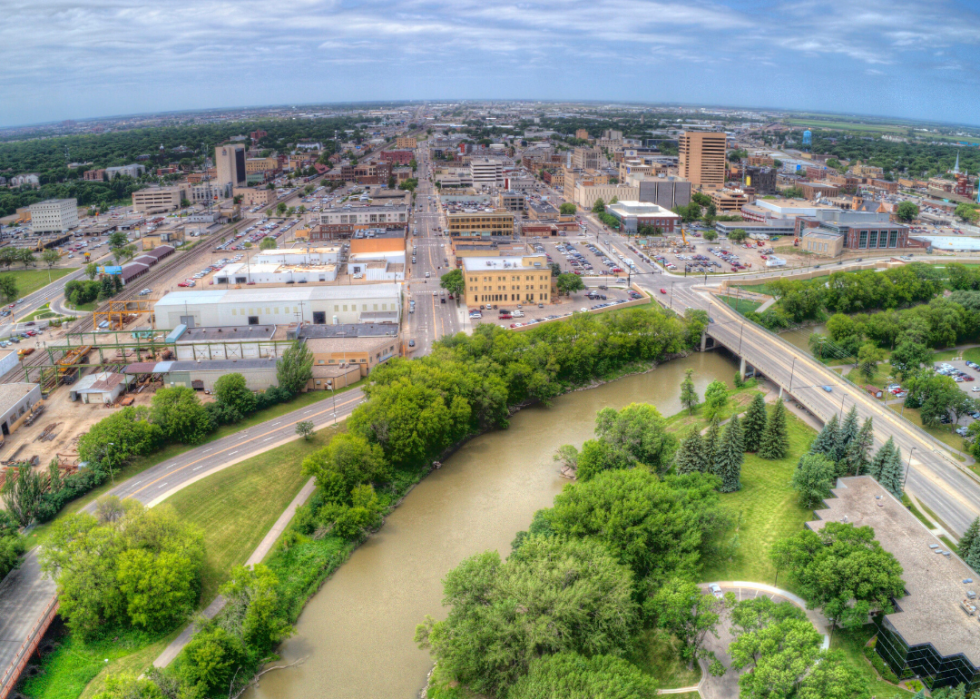
North Dakota
- Minimum wage in 2020: $7.25
- Minimum wage in 2000: $5.15 ($7.93 inflation-adjusted)
- Minimum wage in 1980: $2.60–$3.10
North Dakota pays workers the federally-mandated minimum wage of $7.25, which has not increased since 2009. Employees at Walmarts in North Dakota earn $15.90 per hour, more than double the state’s minimum wage per hour.

Ohio
- Minimum wage in 2020: $8.70 (large employers) / $7.25 (small employers)
- Minimum wage in 2000: $2.80–$4.25
- Minimum wage in 1980: $2.30 ($7.71 inflation-adjusted)
Ohio's minimum wage increased on Jan. 1, 2019, to $8.55 per hour (from $8.30), and rose to $8.70 in January 2020. The minimum rate for those earning tipped wages is $4.35 per hour. Ohio was one of seven states that automatically increased their rates based on the cost of living.

Oklahoma
- Minimum wage in 2020: $7.25 (large employers) / $2 (small employers)
- Minimum wage in 2000: $2–$5.15
- Minimum wage in 1980: $2 ($6.70 inflation-adjusted)
Workers in Oklahoma, where the minimum wage sits at the federally-mandated rate of $7.25, may be surprised to learn that 10 former presidents (Democratic and Republican) have approved raises. There is a grassroots campaign growing from coast to coast to raise the minimum wage to $15.

Oregon
- Minimum wage in 2020: $11.25
- Minimum wage in 2000: $6.50 ($10.01 inflation-adjusted)
- Minimum wage in 1980: $2.90 ($9.72 inflation-adjusted)
Oregon's minimum wage was recently increased from $10.75 to $11.25 on the first of July. On July 1, 2022, the wage will increase to $13.50 and will then be indexed to inflation beginning one year later.

Pennsylvania
- Minimum wage in 2020: $7.25
- Minimum wage in 2000: $5.15 ($7.93 inflation-adjusted)
- Minimum wage in 1980: $3.10 ($10.39 inflation-adjusted)
Fifty-two years ago, the purchasing power of the minimum wage was at its highest. Workers from Pennsylvania would have more buying power than they do today at their minimum wage rate of $7.25. State workers were just awarded an increase to $12 an hour with a bump of 50 cents each July 1, until their minimum wage reaches $15 per hour in 2024.

Rhode Island
- Minimum wage in 2020: $11.50
- Minimum wage in 2000: $5.65 ($8.70 inflation-adjusted)
- Minimum wage in 1980: $2.65 ($8.88 inflation-adjusted)
Rhode Island's minimum wage jumped to from $10.50 to $11.50 an hour in October 2020. The living wage for an individual is $1.31 higher than the minimum wage.

South Carolina
- Minimum wage in 2020: no state-level minimum
- Minimum wage in 2000: no state-level minimum
- Minimum wage in 1980: no state-level minimum
South Carolina is one of five states that does not have a state-level minimum wage. President Franklin D. Roosevelt introduced the first federal minimum wage 80 years ago. Minimum wage then was 25 cents an hour, which would be about $4 per hour in today's money.
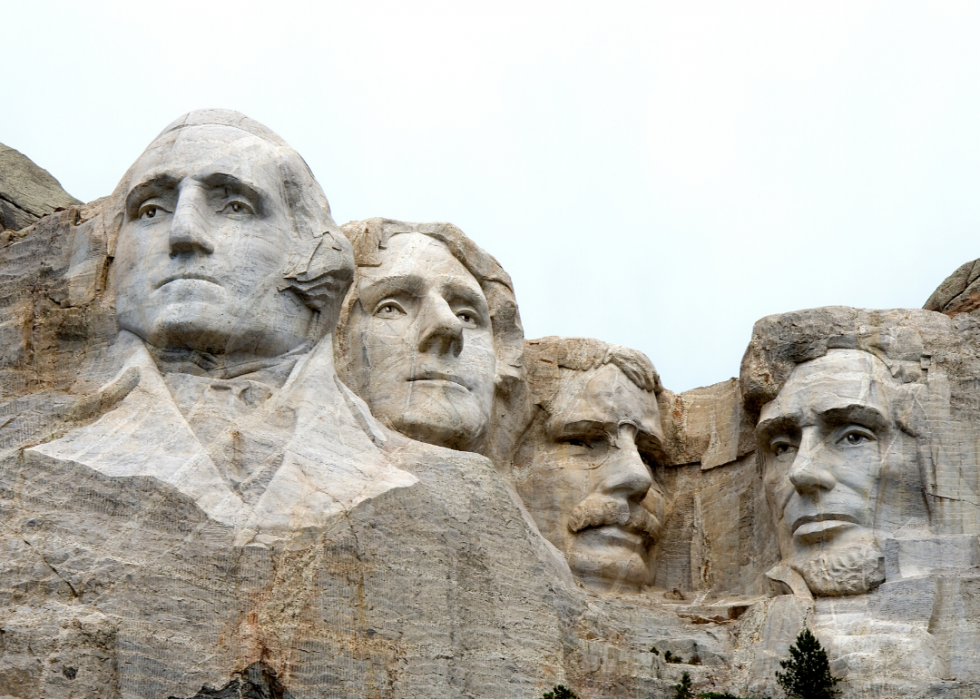
South Dakota
- Minimum wage in 2020: $9.30
- Minimum wage in 2000: $5.15 ($7.93 inflation-adjusted)
- Minimum wage in 1980: $2.30 ($7.71 inflation-adjusted)
South Dakota’s minimum wage increased to $9.30 on Jan. 1, 2020. In 2021, the minimum wage will increase to $9.45 an hour. The hourly rate for tipped employees in 2021 will be half that rate, or $4.72 per hour.

Tennessee
- Minimum wage in 2020: no state-level minimum
- Minimum wage in 2000: no state-level minimum
- Minimum wage in 1980: no state-level minimum
Although the Tennessee economy was experiencing record-low unemployment rates prior to COVID-19, employers in the hospitality industry were reporting having a difficult time attracting workers because of the state’s minimum wage. Tennessee’s minimum wage has not changed in a decade, when lawmakers raised it from $5.58 to the federally-mandated $7.25.
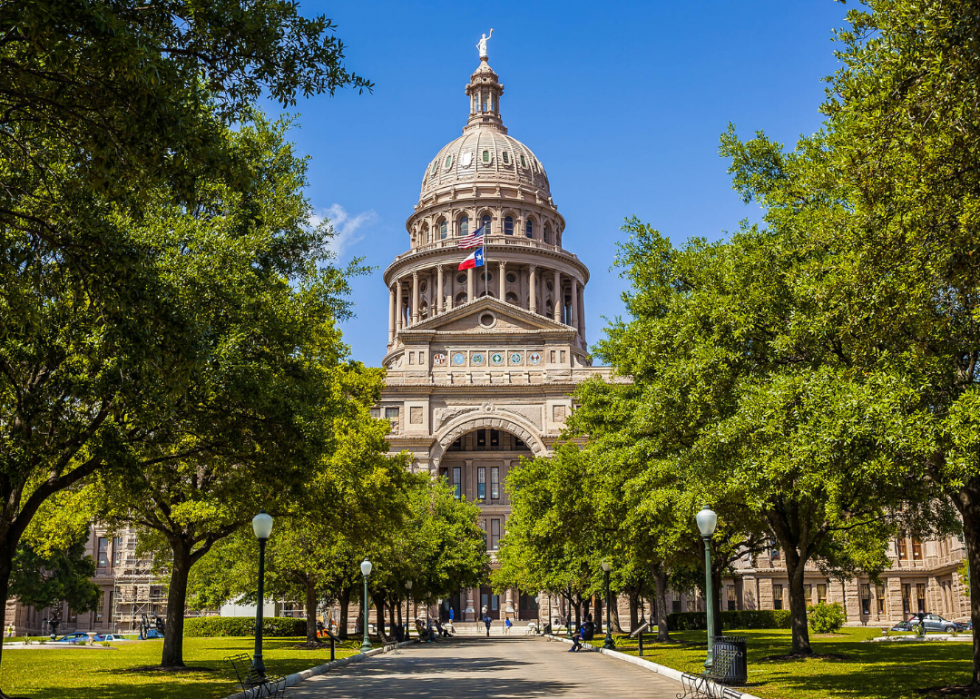
Texas
- Minimum wage in 2020: $7.25
- Minimum wage in 2000: $3.35 ($5.16 inflation-adjusted)
- Minimum wage in 1980: $1.40 ($4.69 inflation-adjusted)
Texas workers earn the federally-mandated minimum wage of $7.25. In 1968, full-time minimum wage workers earned the equivalent of $20,600 a year, while those earning the current $7.25 in 2020 would only make $15,080.

Utah
- Minimum wage in 2020: $7.25
- Minimum wage in 2000: $5.15 ($7.93 inflation-adjusted)
- Minimum wage in 1980: $2.35–$2.60
Utah workers are paid the federally-mandated minimum wage of $7.25. In 2018, lawmakers voted against the jump to $12 hour.

Vermont
- Minimum wage in 2020: $10.96
- Minimum wage in 2000: $5.75 ($8.86 inflation-adjusted)
- Minimum wage in 1980: $3.10 ($10.39 inflation-adjusted)
The Green Mountain's minimum wage sits at $10.96. Gov. Phil Scott vetoed a bill that would have increased the minimum wage to $15 by 2024. Each year, the minimum wage rises according to inflation.

Virginia
- Minimum wage in 2020: $7.25
- Minimum wage in 2000: $5.15 ($7.93 inflation-adjusted)
- Minimum wage in 1980: $2.35 ($7.87 inflation-adjusted)
Virginia hourly workers were among 542,000 workers who earned exactly the prevailing federal minimum wage of $7.25 per hour in 2017. The percentage of hourly paid workers earning $7.25 or less declined from 2.7% in 2016 to 2.3% in 2017.

Washington
- Minimum wage in 2020: $13.50
- Minimum wage in 2000: $6.50 ($10.01 inflation-adjusted)
- Minimum wage in 1980: $2.30 ($7.71 inflation-adjusted)
Washington workers are being paid the second-highest minimum wage in the country, after the rate was increased from $12 to $13.50 at the beginning of 2020. California workers are being paid the third highest minimum rate in line at $13 per hour.
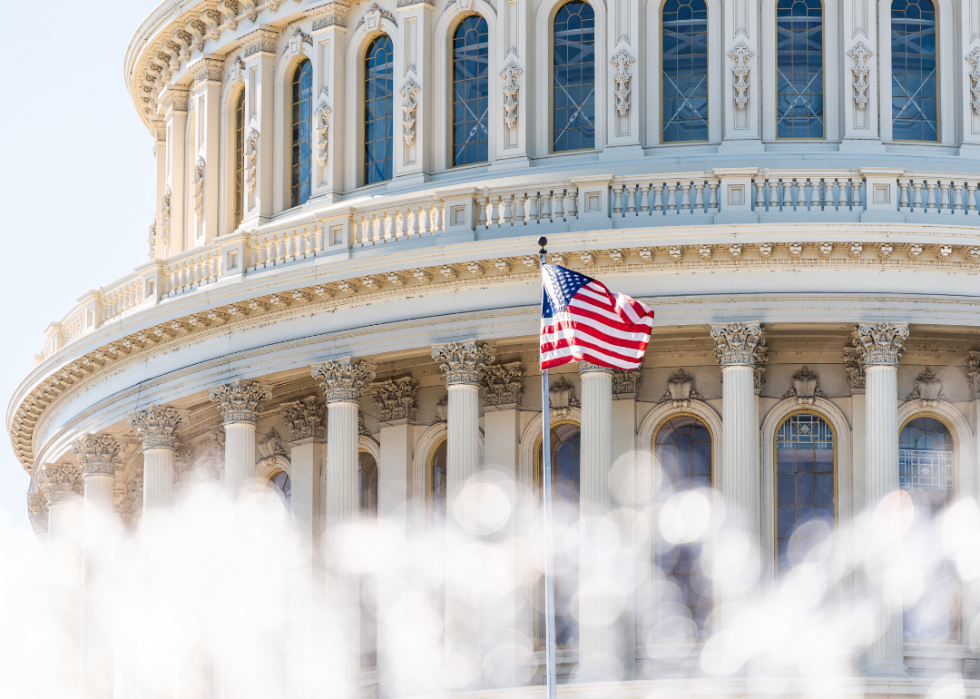
Washington DC
- Minimum wage in 2020: $15
- Minimum wage in 2000: $6.15 ($9.47 inflation-adjusted)
- Minimum wage in 1980: $2.50/$3.50
Washington D.C. has the highest minimum wage in the country at $15. While this rate is $9 above poverty level, it is $1.92 below the living wage for an individual; D.C. has a very high cost of living with exorbitant housing costs.

West Virginia
- Minimum wage in 2020: $8.75
- Minimum wage in 2000: $5.15 ($7.93 inflation-adjusted)
- Minimum wage in 1980: $2.20 ($7.37 inflation-adjusted)
West Virginia’s minimum wage of $8.75 is $2.08 under the living wage for an individual. In 1997, President Bill Clinton introduced legislation allowing states to set their own minimum wage.

Wisconsin
- Minimum wage in 2020: $7.25
- Minimum wage in 2000: $5.15 ($7.93 inflation-adjusted)
- Minimum wage in 1980: $3 ($10.05 inflation-adjusted)
Wisconsin workers earn the current federally-mandated minimum wage of $7.25. Federal minimum wage only rises when a bill is passed by the Senate and signed into law by the president.

Wyoming
- Minimum wage in 2020: $5.15
- Minimum wage in 2000: $1.60 ($2.46 inflation-adjusted)
- Minimum wage in 1980: $1.60 ($5.36 inflation-adjusted)
Wyoming workers have a kinship with hourly employees from Georgia: Both have the lowest minimum wage of $5.15 per hour. That is the same minimum wage that existed during a record-breaking federal freeze from 1997 to 2007.



